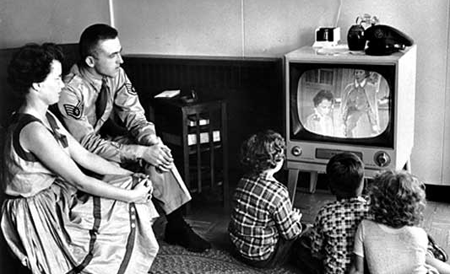Over the past several years of my career I have been fortunate enough to be engaged in a number of conversations centered on leadership. Opinions, perspectives, and thoughts tend to follow the normal stream: leaders are people who others want to follow and who have a sense of direction. On the surface, I agree. However, as my conversations have manifested with others I am found myself a stronger proponent of leaders who build others' capacity, be followers themselves, and can stand outside the spotlight and be proud in handing the "reigns of power" over to others. Admittedly, these are not easy for most leaders. After all, there is a sense of directional authority and purpose as well as an engrained compass of control that manifests itself in many leaders.
This week I am proud to say that I reached a new destination in my journey to becoming a better servant leader. Over the past two years I have instituted a number of new programs within my school, many of which are designed to promote creativity, innovation, and enhanced student/professional learning. Late last week one of these programs was prominently featured in our local paper.
Last Spring I began the process of recruiting a core group of teachers to serve as pilot classrooms in a flipped classroom program. I looked for teachers with skills not that dissimilar to those identified in effective leaders: risk takers; collaborative; forward-thinking; data-driven; and positive. A year ago this week was my first meeting with a teacher who I believed would be a good catalyst for the program. She was tentative about the methodology and required several conversations on how it could benefit her professional practice and her ability to facilitate student learning. During the coming months we met with the other pilot teachers and developed an understanding of the program and the methodologies. We met with Todd Nesloney (@TechNinjaTodd) virtually in a GHO to get his perspective as an experienced flipped classroom teacher, watched teacher videos and discussed our takeaways, and designed the first videos. This past Fall I met with each class within the program and explained the method of learning and their responsibilities. Then I backed off...I let the teachers take the reigns and served in a support role as necessary. Fast forward to February 2014 and the teachers who piloted the program are now training other teachers and expanding their own class programs.
Now back to the feature story...
When I informed our first flipped teacher that there was going to be an article on the program she assumed I would be a large chunk of the story. In all honesty, I felt that I should prepare for my portion of the interview by providing a detailed description of the program.
I am glad I didn't. The reporter who visited the room didn't need my help; the teacher had such a command of the process that it spoke for itself. I watched her handing the reigns of the learning process over to her students and standing back facilitating when the students needed it. When she was asked by the reporter who to speak with she proudly replied, "any of them...they are all awesome!"
This is where my proud father story begins. When the article appeared she and the students were the featured stars. Sure, there were pieces of me explaining resources and supports, but the article starts and ends with the students and the teacher. Then came Monday of this week; I was made aware that the article was picked up by the Associated Press and sent across the AP Wire. As a result the article appeared in media in over 280 unique locations, including 2 other continents. I shared this with our teacher and her students and they were shocked. Their classroom was no longer just theirs, it was also the world's. They were teaching others through their actions. They were truly a global classroom!
As a leader I have to admit that this is has been one of my proudest moments. Sure, something that I started has grown faster than our expectations but more importantly, the program is no longer mine. I have witnessed others taking the program and making it their own. I have witnessed a teacher coming into her own and becoming a more visible leader herself. I have witnessed students taking ownership and control of their own learning. In summary, I have witnessed my leadership not in terms of direction and edict but instead in terms of building capacity and leadership for others.
The next time I am engaged in one of those discussions about leadership you can be sure this will be one of the examples I pull from. I am proud to say that I have become better as a servant leader.
Carroll County Times Story

